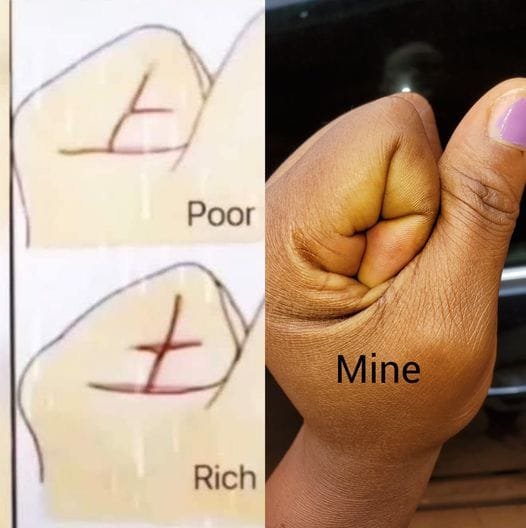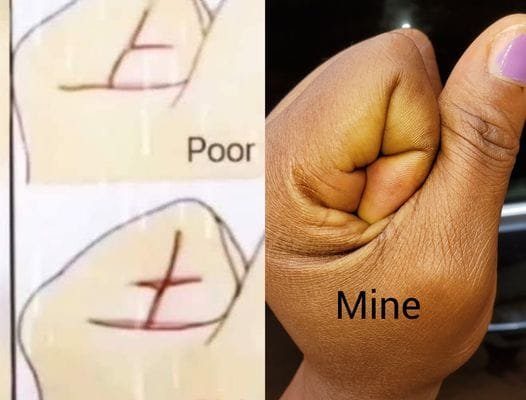Palmistry, also known as chiromancy, is an ancient practice that involves reading the lines, shapes, and markings on a person’s hands to reveal traits about their character or even predict their fortune. For centuries, people have believed that specific lines on the palm can signify wealth, luck, or other personal qualities, making palmistry a popular tradition in many cultures.

Interpreting Wealth Lines in Palmistry
In palmistry, certain markings or patterns on the hand are thought to symbolize financial prosperity or challenges. For example, one interpretation is that crossed lines near the thumb may indicate financial struggle, while deep and well-defined crosses on other parts of the palm are believed to symbolize wealth and success. According to this traditional view, these markings are thought to reveal clues about a person’s financial future.
In images illustrating these beliefs, palms with faint or less distinct lines are often labeled as “Poor,” suggesting limited financial fortune, whereas palms with bold, clear lines are marked as “Rich,” symbolizing an association with wealth or financial success. This contrast humorously suggests that one’s financial fate could be “written” in the lines of their hand—a belief rooted in folk wisdom across various cultures.
Cultural Significance of Palmistry
Palmistry has held symbolic importance in different cultures worldwide. Some belief systems claim that specific line configurations, such as crosses or unique intersections, can reflect a person’s fate, personality, or financial potential. This idea is particularly popular in traditional folklore, where people often turn to hand readings for insights into their personal lives.
However, interpretations of palm lines can vary greatly across cultures and belief systems. In some societies, a particular line shape might be associated with luck or love, while in others, the same line could hold an entirely different meaning. This cultural diversity adds layers of richness to the practice of palmistry, reflecting how unique perspectives have shaped its interpretations over time.
Modern Views on Palmistry and Skepticism
Despite its cultural and historical roots, palmistry is widely regarded with skepticism today. Scientific perspectives typically view it as a pseudoscience, lacking empirical evidence to support claims that hand lines can reliably predict one’s future or financial status. Many modern thinkers consider palmistry a form of entertainment rather than a factual or reliable method of divination.
For those interested in palmistry, it’s often approached with a light-hearted or symbolic mindset, similar to reading horoscopes. While some individuals believe in the insights palmistry offers, many see it as a fun activity rather than a serious tool for understanding their destiny.
In conclusion, while palmistry provides an intriguing glimpse into age-old beliefs about fate and personality, most people today view it as a charming tradition rather than a practical science. Whether you’re fascinated by the possibility of reading wealth lines or just interested in the cultural history behind it, palmistry remains an enduring aspect of folk wisdom and a fun way to explore personal traits.



